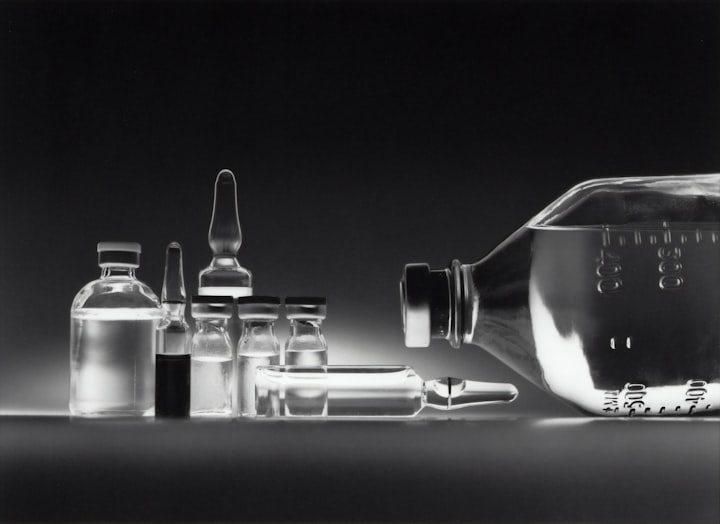Heroin in tampons and morphine for young children
when hard drugs were part of everyday life

Industrially produced medicines were used for all kinds of complaints from the middle of the 19th century onwards. Heroin was considered a good cough expectorant, morphine as a sleeping pill. Even children were given hard drugs.
The therapy was a complete success: in three children — three, four, and eight years old — the drug was effective against whooping cough. Other children who had been administered the new preparation, which was registered in 1898 by a predecessor company of Bayer, would have tolerated it well. “Without a trace of unfavorable side effects,” the Therapeutic Monthly Bulletin of 1899 quotes the experiment. The name of the drug: heroin.
Heroin, cocaine, morphine — in the 19th century, researchers and chemists succeeded in extracting the active ingredients from medicinal plants. The effect had been known for centuries, but now the production of the active ingredients was industrialized. Instead of unsafe ointments, teas, and the like, patients were now given an effective preparation. “Heroin and cocaine used to be used medicinally, with great success and the medical profession were enthusiastic, and so were the patients,” said Tom Bschor, chief physician of the psychiatric department of the Schlosspark-Klinik in Berlin and spokesman of the working group “Psychiatry of the Drug Commission of the German Medical Association”.
The drugs that people were taking were nothing more than hard drugs.
Opiates for small children
The new products worked: Morphine was the precursor of heroin and had already been isolated from opium by the pharmacist’s assistant Friedrich Wilhelm Adam Sertürner from Paderborn at the beginning of the 19th century. He named the soporific substance morphine, after Morpheus, the Greek god of dreams. It was the forerunner of heroin and was stirred in all kinds of remedies. Even teething children were given “Mrs. Winslow’s Soothing Syrup”, a remedy consisting mainly of morphine and alcohol.
Heroin, Bayer’s “heroic” drug, was used for almost everything: pain, depression, respiratory diseases, and cancer. Heroin was even given to morphine patients as a substitute — because it would not be addictive. This assessment was also based on the fact that heroin was swallowed — not injected. In this way, the effect was slower and much less severe.
Two doctors from Berlin are also said to have conducted tests with the new miracle drug heroin. Instead of four weeks, they needed only a few days. “Their patients’ cough disappeared, tuberculosis sufferers no longer spit blood, and even the terminally ill found new courage to face life,” writes Harro Albrecht in “Schmerz — Eine Befreiungsgeschichte” (Pain — A Liberation Story) about the effect at the time. “The world had never seen anything like it.”
Heroin without clinical tests
According to doctors, there were hardly any side effects of heroin. Maybe little constipation and dizziness — but that was it. There were several reasons why heroin or cocaine was so successful. For one thing: “Heroin comes from a time when the approval criteria for drugs were much laxer,” said Dieter Steinhilber, Professor of Pharmaceutical Chemistry at the University of Frankfurt a few years ago.
Instead of elaborate, expensive tests under clinical supervision, people tried it on employees and their relatives. Bayer’s heroin became an immediate sales success: one year after its market launch, it was already available in more than 20 countries. In 1898, the pharmaceutical manufacturer sold only 45 kilograms of the new drug, but some ten years later the figure had risen to 783 kilograms. But: other pharmaceutical companies also offered heroin products. And so all sections of the population took it, even tampons are said to have been impregnated with heroin (for sexually transmitted diseases).
Another reason for the success of the preparations: the advertising drum was beaten hard for ointments, juices, pills, and powders. Large advertisements promoted the benefits of the preparations, and readers found the packages printed on prescription cards, flyers, or calendars. Mothers putting their happy children to bed or playing infants — the family idyll as motif worked.
But not everything was rosy, already at the turn of the century doctors came forward to warn of the new miracle cures. They showed that heroin — in increased doses — was indeed addictive. The first heroin deaths also scratched the picture of the drug. The first opium conference was held in 1912. There the participants agreed that opiates should be strictly controlled and that dispensing should only be possible in pharmacies. The outbreak of the First World War, however, made the international implementation of these decisions more difficult.
Of heroin and aspirin
The soldiers’ wounds gave opiates an unprecedented sales volume, so that dependence on these drugs was also called “soldier’s disease”. However, it was clear that these were not miracle cures, but hard drugs. The USA became a pioneer in the fight against these substances — heroin sold particularly well here. It was not until 1925 that the Opium Commission of the League of Nations agreed on a ban on heroin, and Germany ratified this ban in 1929. The ban made production unattractive for the manufacturers. Bayer stopped production almost completely, and in 1931 it was completely shut down.
Felix Hoffmann, a chemist at Bayer, is considered the inventor of diacetylmorphine — which Bayer marketed under the name heroin. But he also developed another drug that became more profitable for Bayer: Aspirin.
About the Creator
AddictiveWritings
I’m a young creative writer and artist from Germany who has a fable for anything strange or odd.^^






Comments
There are no comments for this story
Be the first to respond and start the conversation.